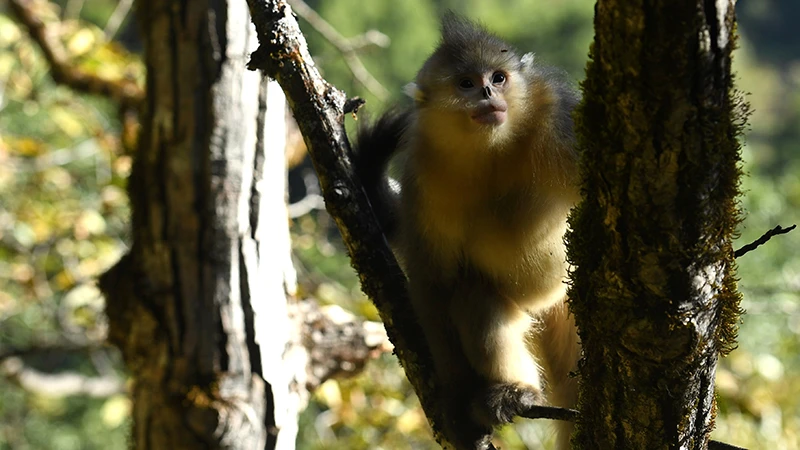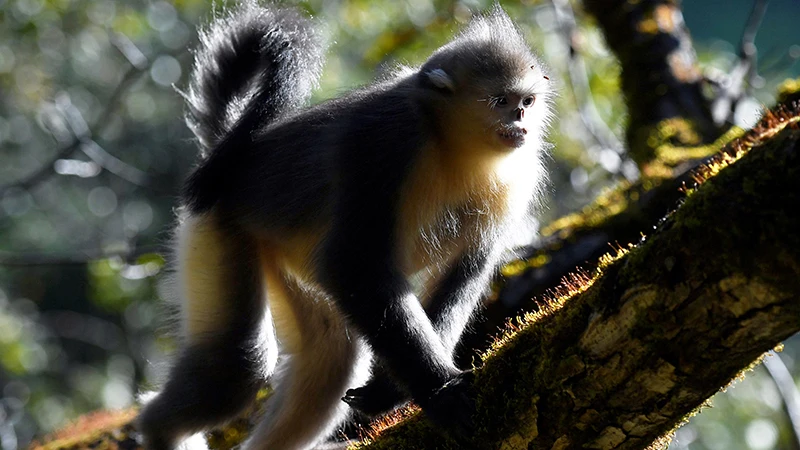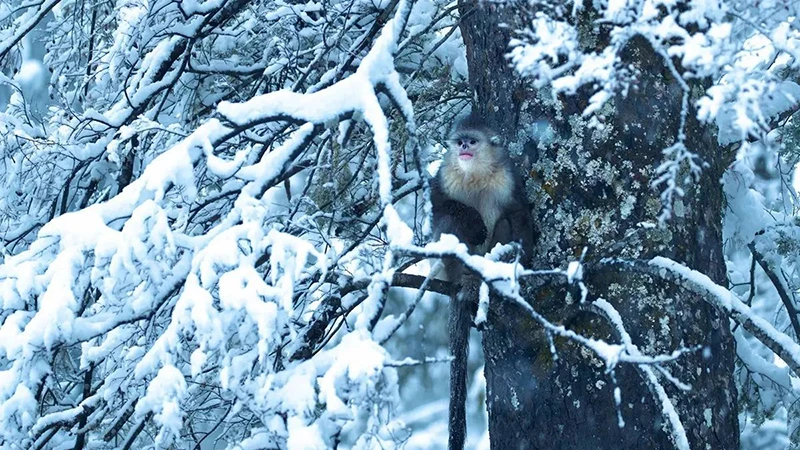Deep in the heart of Shangri-La, where towering mountains meet misty valleys, lies a place shrouded in mystery and beauty. White Horse Snow Mountain, nestled in the northwestern corner of Shangri-La, boasts rugged peaks blanketed in snow year-round, resembling a galloping white stallion. It’s here, among these breathtaking landscapes, that one of the world’s most striking animals resides—the Yunnan golden snub-nosed monkey.
With their luminous golden fur and striking blue faces, these monkeys are considered some of the most beautiful creatures on Earth. For years, the Yunnan golden snub-nosed monkey population has been on the rise, thanks to diligent conservation efforts. But despite this success, the story of the monkeys and the people who protect them is filled with unexpected twists.

The Mysterious Disappearance of the "Big Guy" Family
He Xingmin (和兴民), a veteran ranger at White Horse Snow Mountain Nature Reserve, has dedicated over a decade to protecting this extraordinary species. He knows the area and the monkey families that live there better than most, but earlier this year, something unusual happened that even He couldn’t explain. While on patrol, He and his team discovered an injured golden snub-nosed monkey that belonged to a group led by a dominant male they called "Big Guy." After nursing the monkey back to health, the rangers set out to return it to its family—only to find the entire group had disappeared from their usual territory.
For He and his team, this was more than puzzling; it was concerning. The "Big Guy" family had long been a familiar presence in the region, and their sudden vanishing act was unprecedented. With no clear answers, He and his colleagues launched an expedition to uncover where the monkeys had gone.
A Trek Into the Unknown
Three days of intensive searching yielded little sign of the missing family. On the fourth day, however, the team stumbled across a clue. Scattered throughout a coniferous forest were partially eaten branches and leaves, and the bite marks resembled those of golden snub-nosed monkeys. It was a promising lead, but after carefully scouring the area, the team still came up empty-handed.
As they examined the droppings left behind, He deduced that the monkeys had likely passed through the area about a day earlier. But why had they moved? Yunnan golden snub-nosed monkeys are creatures of habit, often staying within well-defined territories. Something had driven them away.
One theory quickly emerged: the rising temperatures in recent years had forced the monkeys to seek higher ground. Normally living near the snow line, these primates rely on the cold, high-altitude environment for survival. Was climate change pushing them to new, more isolated habitats?
A New Home Above the Snowline
Following this theory, the team pushed further up the mountain, venturing into higher, colder terrain. Finally, near the remote back slopes of the mountain behind Ba Mei (巴美), they discovered what they had been searching for. Tucked away in a dense fir forest, they heard the distinct calls of golden snub-nosed monkeys echoing through the trees. And there, amid the towering pines, was the elusive “Big Guy” family, feasting contentedly on mats of lichen that hung from the trees.
The sight of the monkeys in this unexpected location was both a relief and a revelation. The dense growth of lichen—a staple food for golden snub-nosed monkeys—was far more abundant in these higher elevations, where the air is crisp and unpolluted. In recent years, however, the lower slopes of White Horse Snow Mountain had begun to lose their lichen due to rising temperatures, which had pushed the snowline ever higher. The shrinking habitat for the cold-adapted fir trees had, in turn, reduced the availability of lichen, forcing the monkeys into unfamiliar territory.
In their search for food, the "Big Guy" family had stumbled upon this untouched haven, rich in both shelter and sustenance. It was a fortunate find for the monkeys, but it raised questions about the long-term survival of their population.



